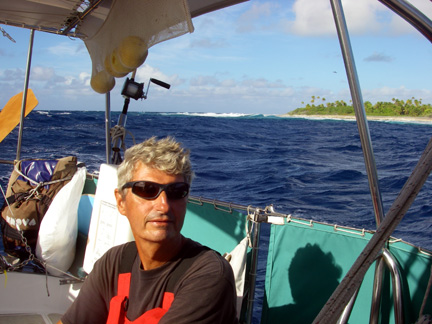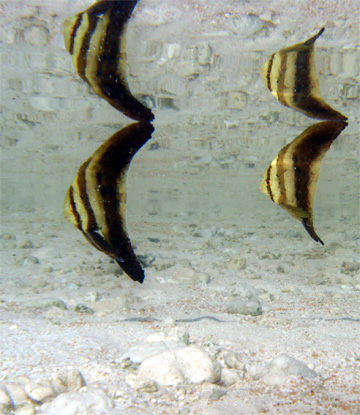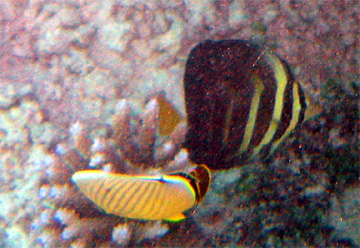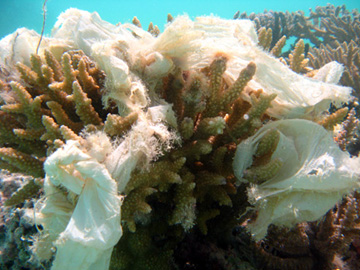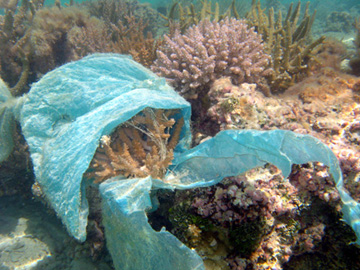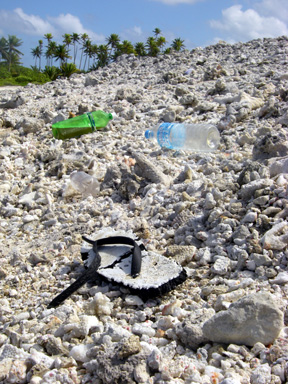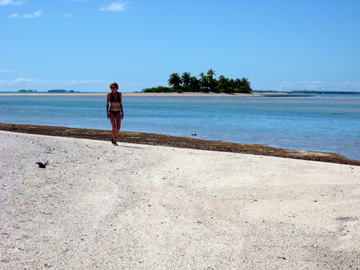
|
Strolling on deserted beaches . . .Many atolls are populated; Tahanea is a wildlife preserve and has no permanent population.
|
We walked across coral reefs that haven't been alive for thousands of years, since the sea surface was far above the aquamarine and vermillion flesh of the giant clams and the dens of the spotted moray eels. We waded up to our waists, tiptoeing between the sea slugs. Fins of small black-tipped reef sharks skim the surface of the shallow reefs, approaching our legs and suddenly shying away when they realize we're just too big for lunch.
|
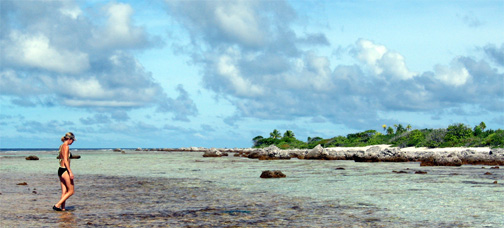
|
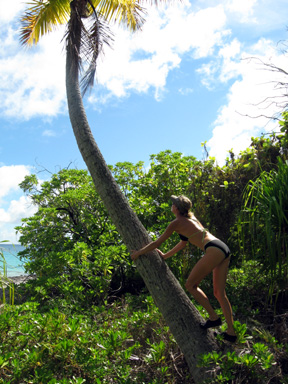
|
The only free fruit here is up a tree, and you have to climb it yourself. The lazy way is to search the beach for coconuts and shake them to hear if they harbor sweet water. Then you sit on the sharp lava-rocked beach, hacking away at the tough fibrous hull with an axe to get at the sumptious white meat inside.
|
We felt like we found the pot of gold at the end of the rainbow, safely anchored in our protected lagoon, the surf crashing just outside the encircling reef.
|
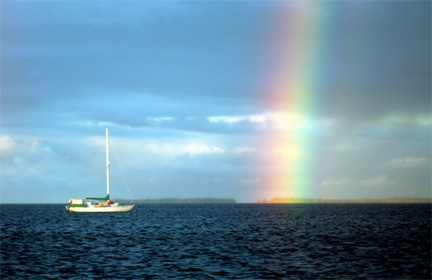
|
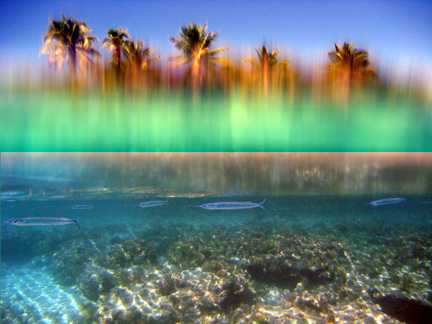
|
Much of what we came to see is underwater. One careless stroke of a dive fin knocks over a fragile 8-inch piece of live coral that took hundreds of years to grow--an example of why humans and coral reefs do not mix well. Paul was disappointed to find the water clarity poorer and the concentration of underwater plastic trash much higher than when he first visited the Tuamotus fifteen years ago, but there were still plenty of fish.
|
|
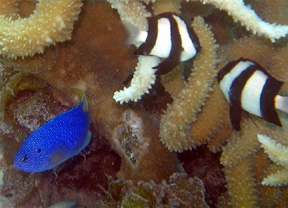
Fish in coral
|
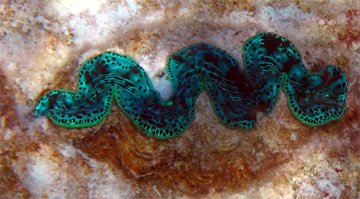
When a diver draws near, giant clams, dressed in iridescent blues, greens, and reds, snap back into the shell like a sunbathing girl quickly covering herself
|
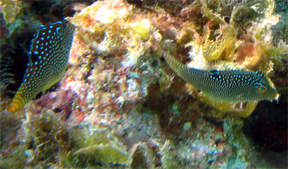
Boxfish
|
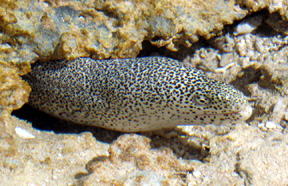
At a coral head rising steeply from a depth of sixty feet to break the surface of the lagoon, we saw a tiny pipefish with a seahorse-like head and a 6' moray eel. This spotted moray is a puny 1-footer, but he was willing to pose for the camera.
|
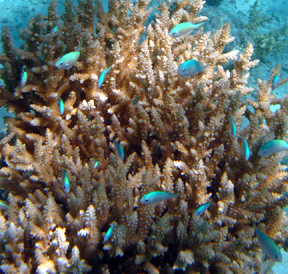
Every coral head is a skyscraper of fish offices and apartments
|
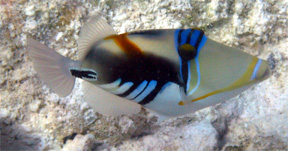
White-barred triggerfish. Not retouched! Those colors are the real thing.
|













